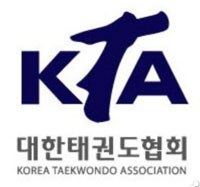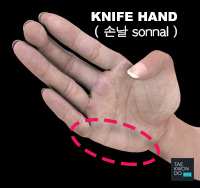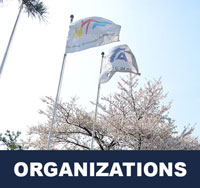Taekwondo 태권도Taekwondo Preschool
Promotion from one geup to the next can proceed rapidly in some schools, since schools often allow geup promotions every two, three, or four months. Students of geup rank learn the most basic techniques first, and then move on to more advanced techniques as they approach first dan. Many of the older and more traditional schools often take longer to allow students to test for higher ranks than newer, more contemporary schools, as they may not have the required testing intervals. View Taekwondo belt levels »

Korea Taekwondo Association (KTA)
Two of the most popular systems of taekwondo are named solely after their respective organizations: the World Taekwondo (WT) and the International Taekwon-Do Federation (ITF).
Korea Taekwondo Association (KTA), originally the Korea Taekwon-Do Association, is the first taekwondo organization. It was founded in 1959, although official South Korean sources give 1961 as its year of establishment. In 1966, some members of the Korea Taekwondo Association (KTA), led by H. H. Choi, formed the International Taekwon-Do Federation (ITF); other members founded Kukkiwon and the World Taekwondo Federation (WTF) in the early 1970s. The Korea Taekwondo Association (KTA) sits under the Korea Sports Council, is aligned with Kukkiwon, and is a Member National Association (MNA) of the World Taekwondo Federation (WTF). The World Taekwondo Federation (WTF) has renamed itself to World Taekwondo (WT) in 2017. Korea Taekwondo Association (KTA)'s goal is to promote the martial art taekwondo as a national sport within South Korea.
History
The KTA's history has been marked by political difficulties. In 1959, H. H. Choi was the first President of the Korea Taekwondo Association (KTA) and Byung Jik Ro (listed as "No" by Park, 1993) and Kae Byung Yun were the inaugural Vice-Presidents. When H. H. Choi was appointed as South Korea's ambassador to Malaysia in 1962, Myung Shin Choi became the second President of the Korea Taekwondo Association (KTA). In the early 1960s, the KTA was renamed as the Korea Taesoodo Association, and then to the current form in 1965.
During the 1960s, the KTA assembled the twelve original masters of taekwondo to promote taekwondo throughout the world. Choi headed a demonstration tour of 18 countries in 1965; this was one of many demonstration missions that eventually covered every continent. Choi again became President in 1965, but was forced to resign after a year, reportedly due to his unpopular authoritarian leadership style. He went on to establish the International Taekwon-Do Federation (ITF) the following year. Ro of the Song Moo Kwan, who had been one of the KTA's inaugural Vice-Presidents, became the fourth President.
In 1967, Yong Chae Kim of the Kang Duk Kwan became the fifth President of the KTA. That same year, the KTA created new black belt forms, including Koryo, Keumgang, Taebaek, Pyongwon, Sipjin, Jitae, Cheongkwon, Hansu, and Ilyo. On 29 January 1971, Un Yong Kim became the sixth President of the KTA, and continued in the position in 1973. The KTA's leadership would remain stable for the next 20 years or so. In 1989, Chong Soo Hong from the Moo Duk Kwan was appointed Vice-President of the KTA.
The early 2000s were a time of trouble for the KTA leadership. One source states that Un Yong Kim resigned from the KTA presidency in 2001, while other sources state that in 1997, Pil Gon Rhee was already in place as President of the KTA. In any case, Kim presided over the organization for around 20 years. In March 2002, Cheon Seo Koo was elected President of the KTA, and apparently held that position until at least 2004, though news sources have reported that he was arrested in late 2003.
In early 2008, Jung Gil Kim was President of the Korea Taekwondo Association (KTA). On 11 June 2008, Joon Pyo Hong was elected as the 24th President of the KTA, and he continued in the position in 2009.
Rank Promotions
The first official Korea Taekwondo Association (KTA) dan promotion test was held on 11 November 1962. The KTA continued awarding dan ranks for several years, but handed over direct dan promotion responsibilities to either the World Taekwondo Federation (WTF) in April 1976, according to a Black Belt magazine report or to Kukkiwon on 5 February 1980, according to historians Won Sik Kang and Kyong Myong Lee. Since then, however, some dan ranks have apparently still been awarded under the authority of the KTA.

Highlight Knife Hand ( 손날 sonnal ) Posture
By tucking the thumb into the palm, a surface called the knife hand or hand blade ( 손날 sonnal ) is formed. The surface extends with the muscle at the side of the hand located between the base of the small finger and the wrist ( 팔목 palmok ). The hand blade is used as both an offensive and defensive technique which can be executed as a high, low, middle, side, inward, outward, rising or circular. Use of this technique as both a strike and block is featured prominently in many of the World Taekwondo (WT) Taegeuk Poomse.
* Please see a certified Master Instructor ( 사범님 sabeomnim ) for training. Proper guidance and instructions are needed to ensure safe training.

Related Articles
Original Taekwondo Kwans ( 관 )
In addition to these private organizations, the original taekwondo schools ( 관 kwans ) that formed the organization that would eventually become the Kukkiwon 국기원 continue to exist as independent fraternal membership organizations that support the World Taekwondo (WT) and the Kukkiwon 국기원. The official curriculum of the kwans is that of the Kukkiwon 국기원. The kwans also function as a channel for the issuing of Kukkiwon dan and poom certification (black belt ranks) for their members. View Taekwondo Kwans ( 관 ) »
RESOURCES
This article uses material from the Wikipedia article "Korea Taekwondo Association", which is released under the Creative Commons Attribution-Share-Alike License 3.0.























